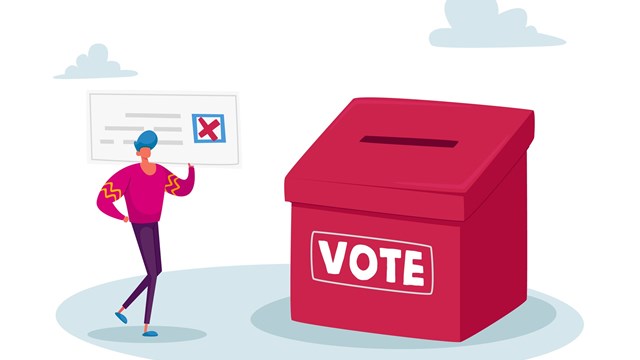Every relationship starts the same way—people getting to know each other and moving into a new co-op or condo is no different. It’s actually a lot like moving into a new town; there are new neighbors, new rules and new community leaders. Some buildings might go to great lengths to welcome newcomers into the community, but for the most part, most boards are hands-off when it comes to the red-carpet treatment.
When Teresa Mears was asked how she was welcomed when she moved into her new home at a 55+ condo community, she replied, “In my new community, two women came by to welcome me and gave me my keys to the clubhouse and the community phone directory,” she says. “There was no other welcome at the condo.”
It's Nothing Personal...
This is not unusual, say those in the industry. “In my 23 years of practice, I have never heard of a board or management company doing anything like a welcome,” says Eric M. Glazer, Esq., a Florida attorney and founder of condo-laws.com. “While I have heard of welcoming committees, the name sounds a lot nicer than what the committee is really trying to accomplish.”
That's not to imply anything sinister or unfriendly, Glazer is quick to add. It's just that in most associations, the process of getting to know a new resident begins at the screening phase and doesn’t really go much further than that. “Most boards have a screening committee that does a background check on the new owner or renter and makes a recommendation to the board as to whether or not to approve the applicant,” he says.
Glazer says that the traditional welcoming committees that he is familiar with just have the new owner sign a copy of the governing documents and rules and regulations, verifying that they've received and understand them. “Then, they let them know that if they violate any of the rules, the wrath of their attorney will follow,” he says wryly. “Some welcome!”
Despite the rarity of the practice, Glazer says that welcoming the new residents in a friendlier way is a much nicer idea. “It’s certainly a lot better than immediately hitting them with a violation for moving in on a Sunday or after hours.”
A Need-to-Know Basis
According to experts when a new unit owner moves into a condo or HOA, they should know what’s required on their part once they close on the unit, but since they are moving into a building with other neighbors, a welcome gift might be just what they need to feel like they are home. At most associations however, a resident’s welcome packet is nothing more than a book of house rules and the keys to the clubhouse.
One such reason that boards aren’t extending themselves beyond a handshake and a copy of the rule book is financial. The board is under a fiduciary responsibility to its residents, and is under no obligation to welcome new neighbors.
Living in a building is all about creating a sense of community. “I certainly wouldn’t mind seeing a line item in the budget that allows the association to purchase a token gift for a new owner,” says Glazer. “Perhaps such a welcome would encourage the new owner to further assist the community and, dare I say it, even run for the board of directors.”
Welcome Wagons
Just because a board doesn’t roll out the red carpet when a new resident moves in doesn’t mean they have hearts that are two sizes too small. In some buildings, there aren’t gifts, but instead there are welcoming committees who host community events where residents can mix and mingle. Who takes the role of welcome wagon varies from property to property.
“Everything depends on the property. In some of the larger communities that have an on-site staff and that staff will take the role of welcome wagon,” says Donald W. Kekstadt, AMS, PCAM and president and CEO of Associa Chicagoland. “Usually this staff will have established relationships with local businesses. They’ll let residents know what’s around them in their new digs. If not, usually there is a committee made up of residents who volunteer to welcome new residents.”
“We don’t have a formal rule about welcome wagons but the on-site property manager would handle that function,” says Bob Troyer, the board president of a 126-unit condominium located in Downtown Chicago. “Our board doesn’t do anything formally but we encourage all new residents to come to the board meetings. At the meetings when I see a new face, I ask them to introduce themselves and tell us a little bit about themselves.”
Boards who are interested in welcoming new community members might consider sending a thorough welcome letter that includes all of the rules, as well as pet policies, garbage and recycling information, emergency contact information, city rules and contact information for the city. Here are some other suggestions:
• A letter of welcome signed by the board president and the manager.
• Meeting dates and times, locations and protocol.
• Information on location of the community billboard or website information
• Information on home improvements.
• A list of committees, contact information for the heads of those committees and a sign-up sheet.
• A list of local addresses and phone numbers schools, zoning questions and more.
Other Key Items
“As a property manager we need to make sure they know where to send their assessment checks. We also need emergency contact numbers if there happens to be an emergency on-site and we need to inform all of the residents,” says Kekstadt. “It’s also important for residents to know that they can come to us if they need help, because that's why we're here. Ways to communicate is the number one thing, and directing funds is important. Usually when people move in they don’t know where to send checks and they don’t have any coupon books or statements yet. It’s usually chaotic for new residents the first 60 days.”
There are a number of things a new resident needs to know upon moving into a new building; clarification of rules, policies or other issues.
“When you close you get declarations and rules, all your mortgage stuff. It can be overwhelming,” says Kekstadt. “They need to know what is covered by the association and what isn’t. Oftentimes people will think it’s maintenance free. Well it’s not maintenance free. There are still things owners are responsible for. Those delineations of responsibility are crucial, whether it’s in the rules or the declaration or both. You need to be aware of what you need to do and what the association will take care of. It’s not like you are living in a rental community and someone will come in and fix your toilet. A lot of information should have been delivered to them by the previous owner and then whoever their attorney or realtor typically goes over that kind of stuff with them, but that doesn’t always happen.”
Troyer believes there are official things a new resident needs to know and nice things they should know. “On the need-to-know side they should know all the legal things for closing. They need to know the proper procedures as far as what the assessments are. For many people it’s the first time they’ve lived in a community so they should look at the declaration that covers rules and regulations,” he says. “On the nice things to know, they may want to know where the best Chinese food is or where is the closest barber shop.”
Ultimately, the pros say that once a new resident moves in, the most important way that you can make them feel welcome is by communicating. They should know where to go should they need assistance. They should know what to talk to the manager about and what to talk to the board about. While face-to-face contact with every resident on a regular basis is tough, try to reach the new homeowners so they get to know the board and the management company. This will help the new resident to feel more comfortable and feel as though they are an official resident of the building.
Lisa Iannucci is a freelance writer and a frequent contributor to The Chicagoland Cooperator. Staff writer Christy Smith-Sloman contributed to this article.







Leave a Comment